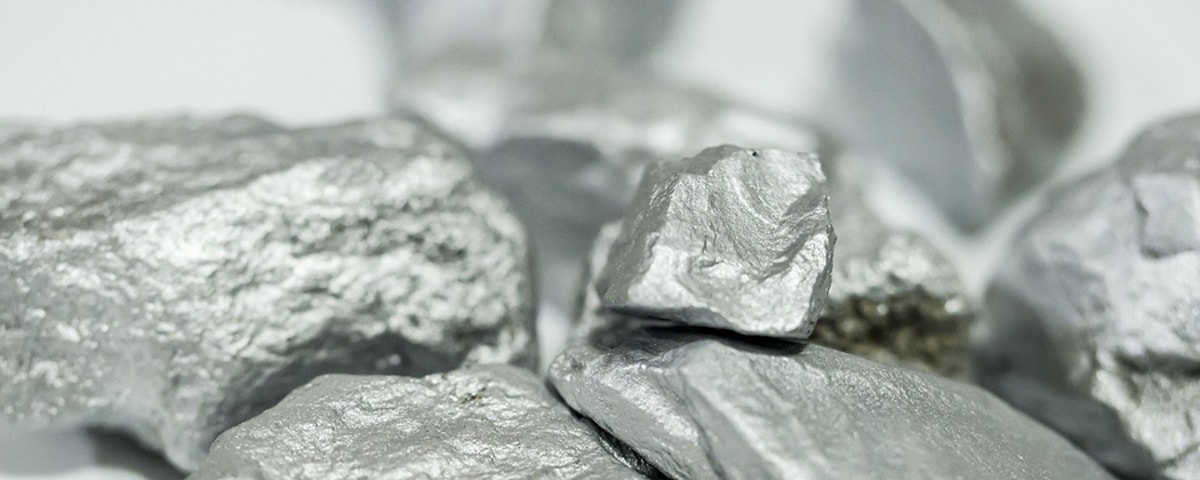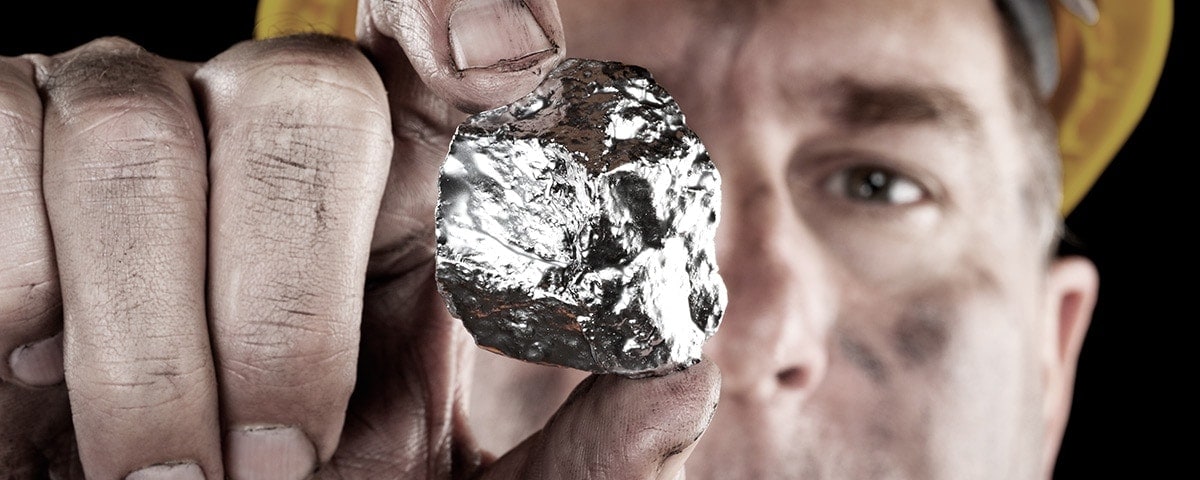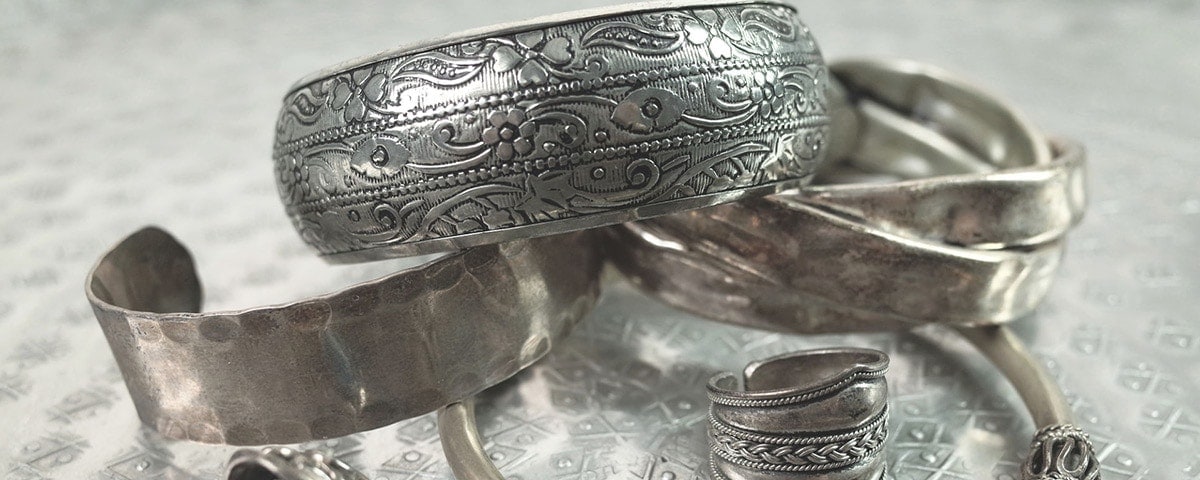What is Silver?
Silver is a metallic element, designated Ag on the periodic table. It is characteristic of a white, lustrous appearance and a high level of malleability and ductility, which has made it popular for use in coinage and silver jewelry. One of the earliest metals to have been worked by humankind, silver has been found in jewelry and other artifacts dating back as far as 4,000 BC.

In addition to its use in jewelry and decorative items, silver has a number of properties that makes it valuable for practical applications. It is noteworthy as having the highest electrical and thermal conductivity of any metal. This, compared with its ability to hold a remarkably thin shape, has made it an invaluable component of many electronic devices. Trace amounts of silver can be found in LED lights, batteries, solar panels, and even CD’s and DVD’s.
Silver is also among the noblest of the transition elements, which means that it is not highly chemically reactive. It therefore resists atmospheric oxidation and corrosion better than most other metals.
Where is Silver Found?
Though not as rare as the heavier precious metals, silver is still relatively hard to find in nature. Throughout the Earth’s crust, this metal makes up roughly 0.05 parts per million. Silver mines are found throughout the world, with the biggest silver producers including Peru, Mexico, China, Australia, Chile, Canada, Poland, and the United States.
Different Varieties of Silver
There is a number of different types of silver. Many of these, like the highly popular sterling silver, are based on the specific silver alloy. These different forms of silver each have their own particular perks in terms of strength, appearance, or other properties.
Silver Jewelry
People have valued silver for millennia, making use of it at least as far back as 4,000 BC. Since then, it has been used to craft silver jewelry, silverware, and a myriad of other items.
Why Do People Choose Silver Jewelry?
Silver offers a number of important advantages when it comes to jewelry. Many people appreciate its simple, neutral coloration, which is easy to match with various skin tones and outfits. It is similar in this respect to white gold and platinum, but it is significantly lighter than both of these metals and therefore generally more comfortable. However, while it lacks the durability of platinum, it holds together better than a gold piece of comparable purity. It is also far less expensive than both platinum and gold, making it more accessible to people with tighter budgets.

Caring for Silver Jewelry
One drawback of silver is that it will tarnish over time and should be regularly cleaned to maintain its attractive appearance. Commercial silver cleaners are sold specifically for this purpose. Alternatively, you can place a piece of silver in a plate that has been lined with aluminum foil and soak it in a small amount of baking soda, then wipe it clean with a soft cloth. Take care while cleaning, as silver is fairly soft and can be easily scratched or disfigured by rough treatment.
Silver Hallmarks
Many pieces of silver will be marked with some sort of stamp, called a hallmark, which will identify the purity of the silver and the origin of the piece. A jeweler may have a signature mark, a region may have a signature mark, and there may be a mark for the year. This will often be accompanied by a number, which will generally come in the form of a three-digit number indicating the number of parts per thousand of silver.
Types of Silver
Silver, as an element, is always the same. However, when discussing silver jewelry and other silver items, you will often hear people referring to different types of silver.
These terms can be based on a specific silver alloy, a country of origin, silver that has been treated a certain way, or more. Here are some of the more common terms you may come across, and their meanings:
Sterling Silver
This represents the most common form of silver used in jewelry. It is an alloy that consists of a minimum of 92.5% silver.
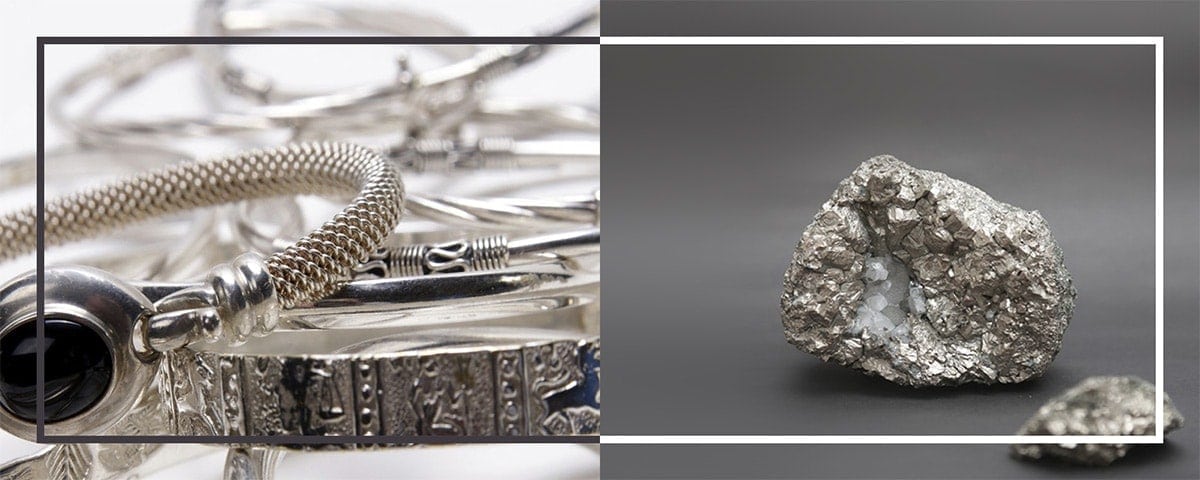
Fine Silver
This is the purest variety of silver, with a minimum silver content of 99.9%. As such, it may sometimes be referred to as pure silver. It’s rare to find fine silver jewelry, since it is too soft for practical use. Silver this pure is usually used only to make bullion for trade.
Britannia Silver
A finer form of silver than sterling, Britannia silver is made up of 95.84% silver. Such silver is generally marked with a symbol to indicate where the silver originated from, the value of the silver, and the year the item was created.
Mexican Silver
Mexico is a leading producer of silver, so the metal often gets associated with the country. Most Mexican silver products are at least 92.5% pure, and can sometimes be identified by a stamp that features an eagle and a number that identifies where in the country it came from.
Russian Silver
Russian silver can be identified by a Russian hallmark, which may be a left profile of a woman’s face wearing a diadem, a right profile of a woman’s face, a right profile of a worker, or a hammer and sickle. In Russia, silver’s purity is measured in zolotnicks. One zolotnick is equal to 4,266 g. This measurement can be converted to standard millesimal fineness by dividing the number by 96.
Coin Silver
This is an American term describing the standard silver alloy used in silver coins. Though this alloy has changed over time, it has currently settled on 90% silver and 10% copper.
French Silver
French silver contains a minimum of 95% silver.
Oxidized Silver
Sometimes silver is treated with a process of controlled oxidation, wherein the metal is intentionally tarnished into a dark, less-lustrous color. Some people prefer oxidized silver for its low-maintenance nature. Oxidized silver can come in different alloys, though sterling is the most common.
German Silver
Also called nickel silver, German silver is not a true silver alloy. It is an imitation silver, made up of a mix of copper, zinc, and nickel. The alloy is commonly found in jewelry and household items.
Junk Silver
This is an informal term, used to describe a silver coin that is in such poor condition that it does not have any value beyond the standard bullion value of its metal.
Silver Alloys
Silver is a stronger metal than gold, but is still far too soft in its pure form to be practically used in silver jewelry and other functional items. It is for this reason that the vast majority of silver products you find are going to be made from a silver alloy, wherein silver is mixed with stronger metals in order to create a more durable material.
Of all the metals that are usually alloyed with silver for the creation of silver jewelry and household items, copper is the most common. However, you are also likely to find silver alloys containing elements like zinc, platinum, palladium, germanium, silicon, or boron.
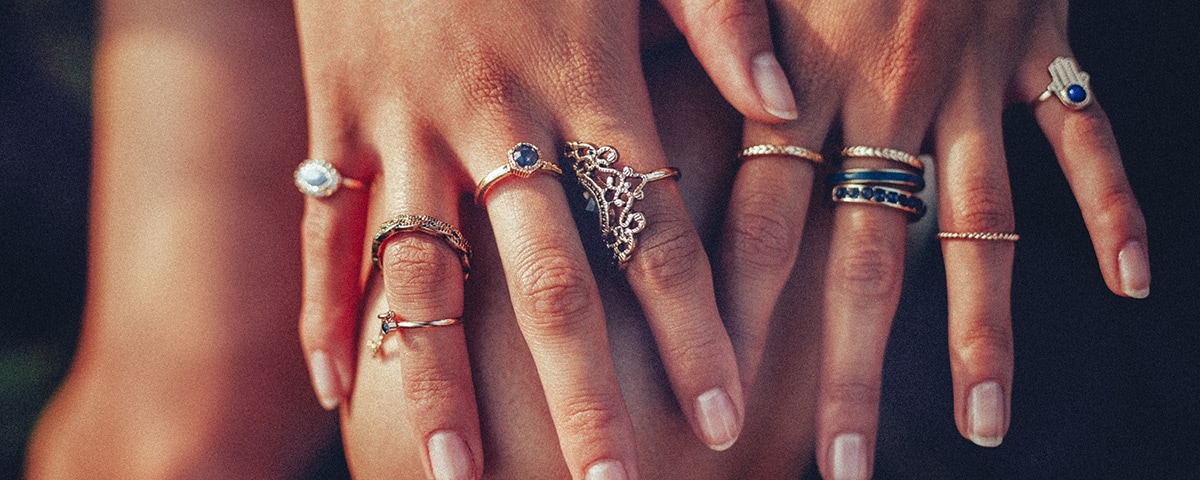
How Much Silver is In My Jewelry?
In most silver items, you can expect the amount of pure silver in the alloy to be measured in parts per thousand. This may be indicated as a percentage, like “97.5%”, or as three decimal places, like “.975”.

